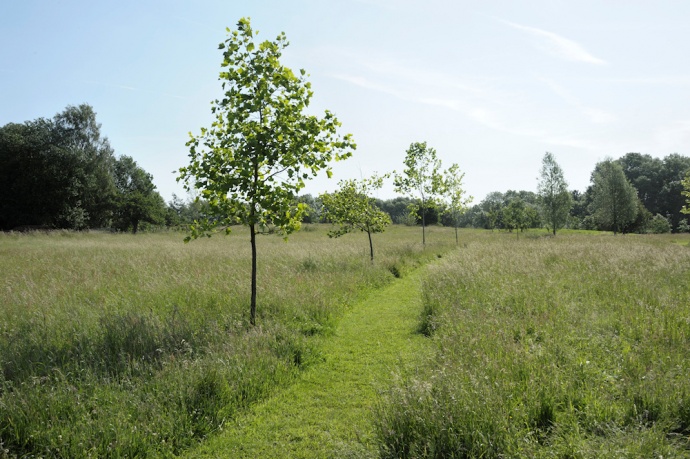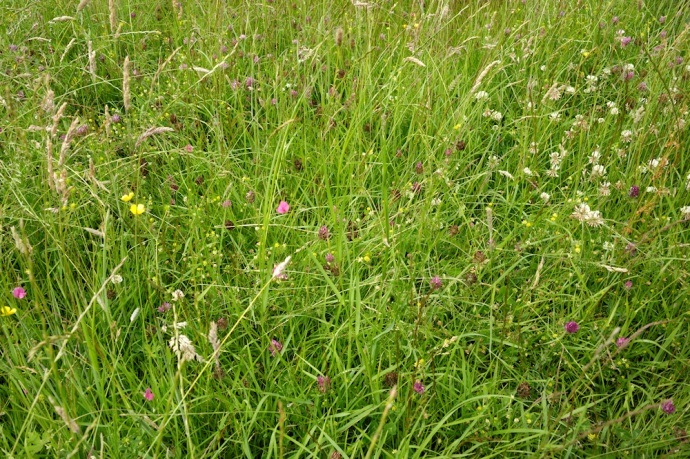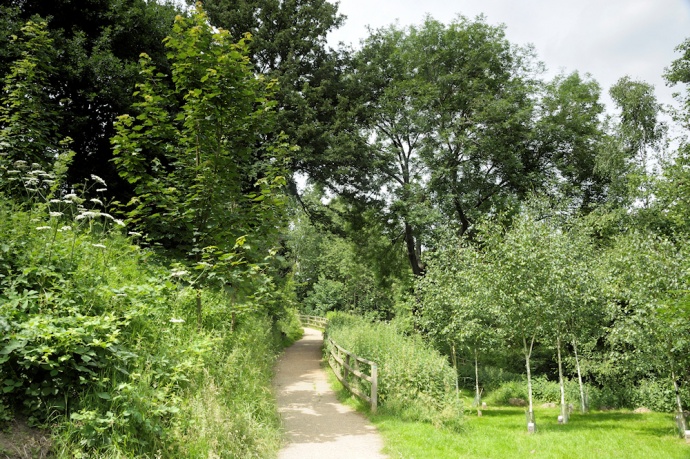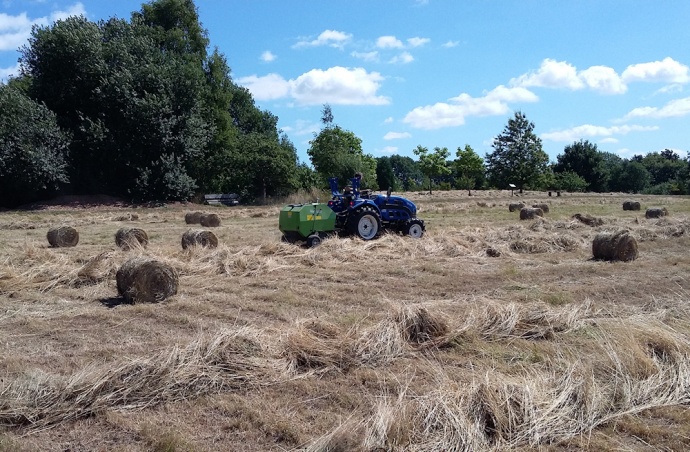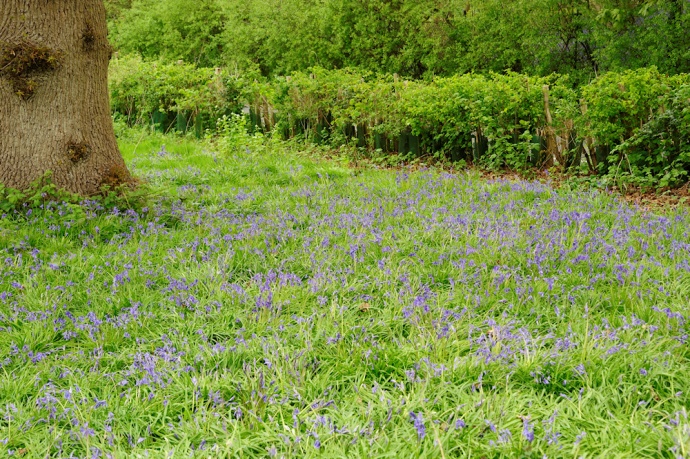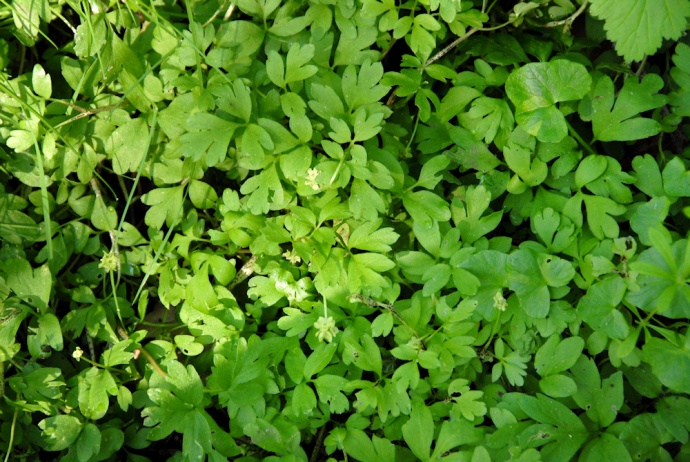Wild Flowers, Grass and Hay
In late September 2020 an area in Main Field was sown with a wild flower mixture mixture containing 27 different varieties of flowers, ideal for pollinators, so that we can attract plenty of butterflies, bees and other insects. The mixture contains annuals, biennials and perennials so we may need to wait a couple of seasons to see the full range of flowers. Photos of the sowing can be seen here.
Please help us to ensure that the seeds get a good start by not walking on the area or allowing your dog to dig in it.
BWT's Adviser, Sharon Bayne writes "It is a popular misconception that nature will find its own way and does not need interference. In fact, this is not true at all when it comes to caring for grassland sites. The natural habitat of the British Isles is woodland and, left to its own devices, grassland will inevitably revert to woodland. First the grass will become coarser and taller, and the flowers will be swamped. Then the brambles and nettles appear, the scrub grows and, before you know it, there is no grassland at all."
When BWT took over the derelict land in 2004, the grass was full of weeds, such as ragwort, thistles, and tall, vigorous grasses like false oat and cocksfoot, so that delicate wildflowers had little chance of surviving and had all but given up growing. Regular maintenance began with mowing between March and October. The aim of that regular cutting has not just been to keep the site looking neat and tidy, although we aim to provide easy access to all our sponsored trees. It has, right from the outset, been carried out with the intention of improving the grassland for wild flowers and wildlife. Although it was unlikely that a wide variety of wild flowers will come back by themselves, regular grass cutting has made conditions more favourable for them to flourish in.
Nine years later, by 2013 wild meadow flowers had re-established themselves.
We have encouraged more delicate grasses such as sweet vernal grass and timothy as well as nectar-producing flowers, full of insects such as spiders, grasshoppers and caterpillars, and therefore better for sustaining bird life. Some areas will have the grass left longer, with just one haycut in the summer, but the areas under young trees will be cut regularly to let them continue to establish.
Some areas will be left untouched, for example around the edge of the site in areas where there is no ragwort to seed back in, thus giving hibernating places for insects whilst the intensive management is underway.
In two of our meadows, Barn Meadow and Gore Meadow we cut hay. In the early years no farmer would take our hay because it was full of ragwort, which is harmful to animals, and thistles. At first we contracted out the hay cutting, but in 2006 BWT bought a tractor, trailer and mower in order to reduce the ragwort and thistles by regular cutting, and by 2010 BWT hay was acceptable. In 2015 BWT hay was welcomed by Buttercups Goat Sanctuary and Cobtree Young Farmers, and since then it has gone to local stables.
Hay making has been an ongoing problem for our maintenance team. Contractors have larger and larger machinery and often fail to arrive in the best weather because we are only a small concern. Buying our own equipment for baling would be an unwarranted expense, and hired or borrowed machinery has a habit of breaking down! Each year brings different weather and a different problem, but our thankfully our valiant maintenance team, however many hours it takes them, always manage to overcome them.
We do control poisonous weeds. Ragwort, for example, is poisonous to some livestock, and horses may be grazing nearby. It is not an offence to grow it for the cinnabar moth, but it is illegal to allow it to spread. So we pull it out before it flowers, with special forks, to stop seeds blowing, as we don’t want to use herbicide unless absolutely necessary. Nettles are also controlled in the central grassland because they affect the quality of the hay cut, but elsewhere are left to benefit wildlife.
Spring is the time when woodland flowers appear, as they need to flower before the shade of the trees becomes too dark. Everyone is familiar with bluebells and celandine but there are some other special plants on BWT land which only grow in ancient woodland. Some of them are very tiny, like this Moschatel, and will take some hunting out. Try searching near the Lilk bridge and Please do not pick them!
